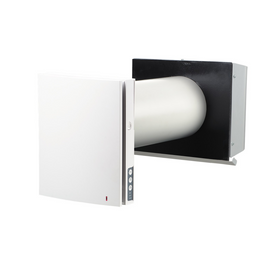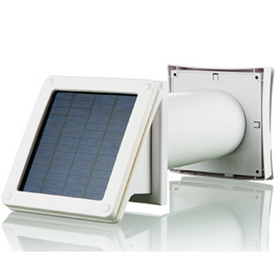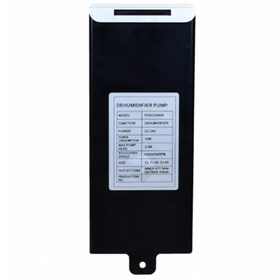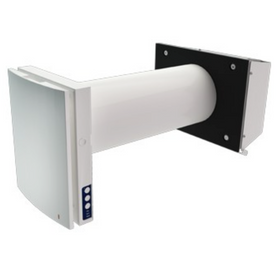
Aerobarrier: A Game Changer for Home Energy Efficiency
Last Updated: Feb 11, 2025It won a 2018 Edison Gold Award, “chosen as the ‘best of the best’ by the world's top senior business executives, academics, and innovation professionals,” in the category of “Sealing Technology and Thermal Applications.” At the January 2018 Orlando National Association of Homebuilders International Builders Show, it took “Best in Show” winner. It was featured in a January 2019 episode of PBS’s This Old House, where “viewers saw how quickly and effectively AeroBarrier seals tight the structural envelope of a home during a major renovation project.”
It might be the biggest innovation in envelope sealing technology you’ve never heard of—until now.
The Problem: Air Leakage
Leaky homes are difficult (and expensive) to heat and to cool. Sealing up a home’s envelope is generally considered the best way to prevent air leakage. According to the Zero Energy Project, “A decade ago, a typical mass-produced home might have an air leakage rate of 8 to 10 air changes per hour (ACH) at 50 Pascals (ACH50). [Pascals are the measure of the degree of a home’s depressurization in a blower door test, used to measure and assess air leakage]. Today, the leakage of a typical new home may be down to 4 or 5 ACH50. Most zero energy homes push the leakage rate to 1.0 or 2.0, while Passive House requirements allow a maximum leakage of 0.6 ACH50.”
Table of Contents
- The AeroBarrier Solution
- AeroBarrier’s 5-step process
- What do the experts say?

While evaluating air leakage can be accomplished with a blower door test, up until now, addressing the leakage—ferreting out the large and small spaces around a house through which air leaks in and out, and then caulking or sealing each one—has been difficult, time-consuming and even spotty work. For example, while many people look to seal gaps around windows and doors, the following areas may be responsible for more significant leakage:
- Basement rim joist areas;
- Holes cut for plumbing traps under tubs and showers;
- Cracks between finish flooring and baseboards;
- Utility chases;
- Plumbing vent pipe penetrations;
- Kitchen soffits;
- Fireplace surrounds;
- Recessed can lights; and
- Cracks between partition top plates and drywall.
But what if you didn’t have to find the holes? What if they were found for you, by simple physics?
The AeroBarrier Solution
The history of AeroBarrier begins over 20 years ago with Aeroseal, a patented technology process that seals cracks and holes in new and existing air duct systems. After years of research and development in aerosol sealing, in 2017 Aeroseal announced its breakthrough envelope sealing technology: AeroBarrier.

The University of California Davis’ Western Cooling Efficiency Center, whose director is the inventor of AeroBarrier, describes the technology this way: “AeroBarrier involves pressurizing a building while applying an aerosol ‘fog’ to the interior. As the air escapes through leaks in the shell of the building, the aerosolized sealant is transported to the leaks, and seals them as the particles try to escape from the building.”

AeroBarrier is a self-guided, computer-controlled sealing system designed for use by builders. According to the aerobarrier.net website FAQ’s, the best time to apply it in construction or a remodel is after rough-in or post-drywall. The material sprayed is a waterborne acrylic with low VOCs (volatile organic compounds) and no off-gassing. The whole process takes around four hours for a single-family home. Costs depend on the construction phase and targeted air-tightness level, but according to the Zero Energy Project, it can run $0.80 to $3.00 per square foot. So if you take the median $1.90 per square foot for a 2,000 square foot home, the cost is about $3,800, with a wide range of variability. Green Building Advisor reports the cost of air-sealing to 1 ACH50 or below in a hypothetical 2,000-square-foot house to be about $3,000.
AeroBarrier’s 5-step process
If a builder opts to use AeroBarrier technology, they will engage in a 5-step process for its installation and use.
- Equipment for AeroBarrier installation arrives in a trailer and includes a compressor, generator, blower door, emitters, hoses, and the AeroBarrier machine.
- Workers prep the home by taping areas that will not be sealed and setting up the sealing-product emitters throughout the area to be sealed. Because the particle size of the aerosolized sealant is very small (about a micron, the width of a human hair), “just bouncing off the drywall,” says AeroBarrier National Director Paul Springer, “does not cause it to accumulate there. And horizontal surfaces only need to be protected if they are finished.”
- The space undergoing envelope sealing is pressurized with the use of a blower door. (In the standard blower door test, the powerful fan that mounts in the frame of an exterior door pulls air OUT of the house—depressurizing—and higher outdoor air pressure then causes air to flow into the home through all unsealed cracks and openings. The same blower door technology is used in reverse in AeroBarrier: air is forced IN to maximize air pressure INSIDE the house, thus sending air OUT of the house through the same unsealed openings.) Once the space is pressurized, the sealant is emitted by sprayers into the pressurized space. Airborne, it follows a pressure gradient to all leaky areas. “The sealant is self-guided to the edges of visible and invisible leaks, creating a seal not by packing the gap but by accumulating across the surface of leaks.” The sealing product is dry within hours.
- Throughout the application process, the computer monitor displays the ACH (air changes/hour) improvements, allowing the installer full control over envelope tightness.
- A final blower door test (with the fan reversed) is run to verify sealing results. A pre- and post-leakage report is generated, and results are guaranteed.
What do the experts say?
Reviews of the AeroBarrier product and process are generally very good.
The Zero Energy Project says, “AeroBarrier offers advantages to every building project where air sealing is a priority.” It also says that with AeroBarrier, a 3.0 ACH50 is a consistently reachable goal for every home and that the technology is especially useful in older homes were finding all the leakage might well be impossible without major demolition.
Green Building Advisor reports research indicating AeroBarrier’s ability to reduce ACH50 to very low levels. In one study of four homes, “The average tightness achieved was 1.09 ACH50, which is nearly 80% below the California requirement of 5 ACH50…That is compared to an average tightness of 4.10 ACH50 for homes at the same stage of construction but not treated with AeroBarrier.”
In another study (“Aerosol Sealing in New Construction”) conducted by the U.S. Department of Energy in research started in 2016, the tightness of three completed houses using AeroBarrier was compared to controls. The results are as follows for the Aerobarrier-sealed home:
- Average = 0.88 ACH50
- 41% tighter than two control houses
- Average 56% tighter than Zero Energy Ready requirement of 2.0 ACH50
The biggest asset of AeroBarrier, says Paul Springer, is that in the face of IECC’s (International Energy Conservation Code) more and more stringent requirements for building ACH (currently pushing for 3-5), a builder can choose a goal ACH for each building project. During the AeroBarrier installation, he says, blower door ACH readings are reported every 90 seconds, so a builder “needn’t have any more angst about passing a blower door test.”
About a quarter of a home’s heat can be gained or lost through leaks in the home, and this is the first product/technology we have seen that finds and seals the leaks that can be so difficult to address. At Rise, we think this is a game-changer for homes to become more energy-efficient—meaning homeowners will save money and decrease their carbon footprint.
To get started on your building project, Springer suggests interested builders go to the “Contact Us” page of the AeroBarrier website, or find a local dealer (Dealer Locator) in the footer of that same website page.
Donna Pols Trump
Donna Pols Trump’s work has been published in literary magazines and online. She has received several Pushcart Prize nominations. Donna’s education includes degrees in Biology and Physical Therapy and a host of writing classes taken and taught at The Loft Literary Center in Minneapolis. Her short story “Portage” was selected by judge Anne Tyler for first prize in a 2018 contest sponsored by december magazine.










